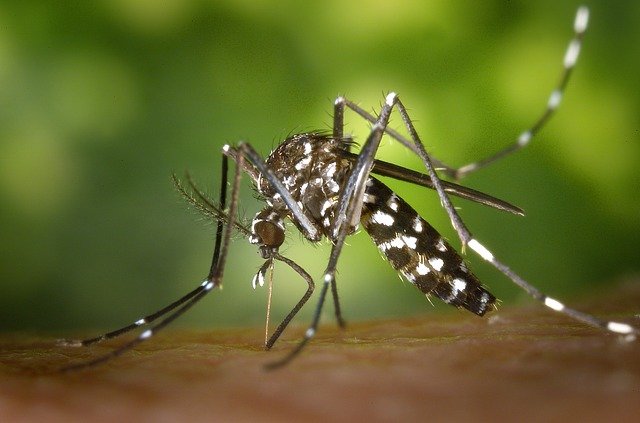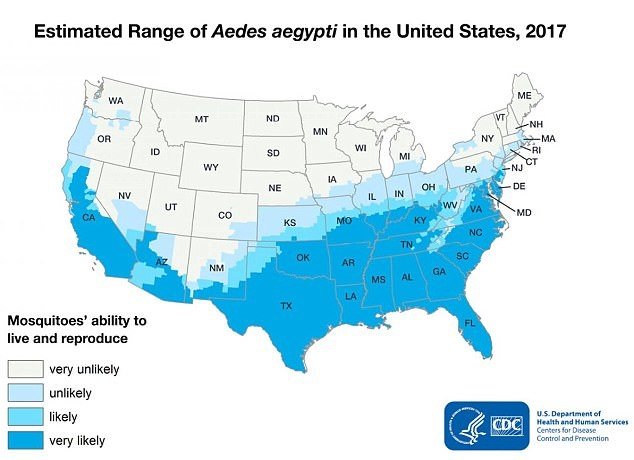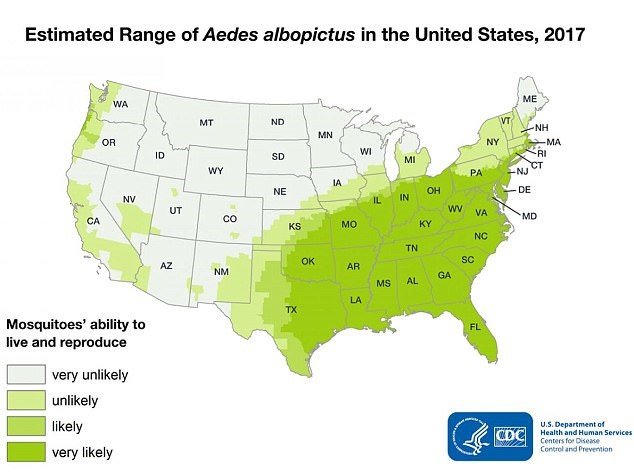
Disease-Carrying Mosquitoes Have Scary Potential
According to a new CDC report published in the Journal of Medical Entomology on September 21, 2017, more than 75 percent of the United States is at risk of an outbreak of mosquito-borne diseases.
Researchers analyzed county-level data of the presence and potential range for two species of mosquito, Aedes aegypti and Aedes albopictus, across the entire country. Results, in the form of a map (below), show the majority of the nation is in danger of deadly diseases these mosquitoes carry, such as Zika, dengue fever, and yellow fever.
71 percent of counties in the 48 contiguous states had suitable conditions for Aedes aegypti, the species of mosquito most commonly associated with Zika, to thrive. “The range where Aedes aegypti could survive includes much of the eastern United States south of the Great Lakes, as well as parts of several southwestern states.” Additionally, 75 percent of counties were suitable for Aedes albopictus, which also carry Zika and other diseases. “The range where Aedes albopictus could survive extends farther into the northeast but is more limited in the southwest.” The CDC claims this is a growing health threat in parts of the United States where these species of mosquito are currently established.
Rebecca Eisen, a research biologist for the CDC explains, “These maps show areas where CDC predicts Aedes aegypti and albopictus mosquitoes could survive and reproduce if introduced to an area during the months when mosquitoes are locally active. Additionally, the maps can help healthcare providers and the public understand where these types of mosquitoes could be found so that they can take steps to protect against mosquito bites and possible infection.” It is important to understand, though, that the maps do not show where currently or the place where there was a risk of virus transmission or mosquito abundance.
Researchers claim temperature is the strongest factor in determining whether these species can survive and reproduce. Mosquitoes thrive and grow in the warmth. Hot summers are ideal, but regions or cities with milder winters allow the insect to survive all year round. Cold, winter temperatures reduce the likelihood of eggs surviving the winter, especially for Aedes aegypti mosquitoes. This means entire counties may not necessarily be suitable for mosquitoes. Consequently, given the increasing number of disease-carrying insects like mosquitoes and ticks over the years, climate change has a significant effect on human health.
The CDC suggests wearing long-sleeved shirts and trousers, staying in places with air conditioning or that use window and door screens, using insect repellents approved by the Environmental Protection Agency (EPA), and treating clothing with the insecticide permethrin to avoid being bitten by mosquitoes and potentially catching one of the diseases they spread.
Safetec Insect Repellant is a deet and pesticide-free formula that contains natural plant-based repellents Citronella oil and Soybean oil, making to safe for use on both children and adults. With the increased threat of mosquito-transmitted diseases, this product is essential for outdoor activity.
References:
https://www.cdc.gov/zika/vector/range.html
https://www.cdc.gov/zika/pdfs/Zika-mosquito-maps.pdf
https://www.upi.com/Health_News/2017/09/21/Sound-the-mosquito-alarm-across-the-USA/1341506041689/
https://www.yahoo.com/news/mosquitoes-carrying-deadly-diseases-could-140235986.html?.tsrc=fauxdal
https://www.dailymail.co.uk/health/article-4910272/Diseaseed-mosquitoes-swarm-75-US.html?ITO=1490&ns_mchannel=rss&ns_campaign=1490


